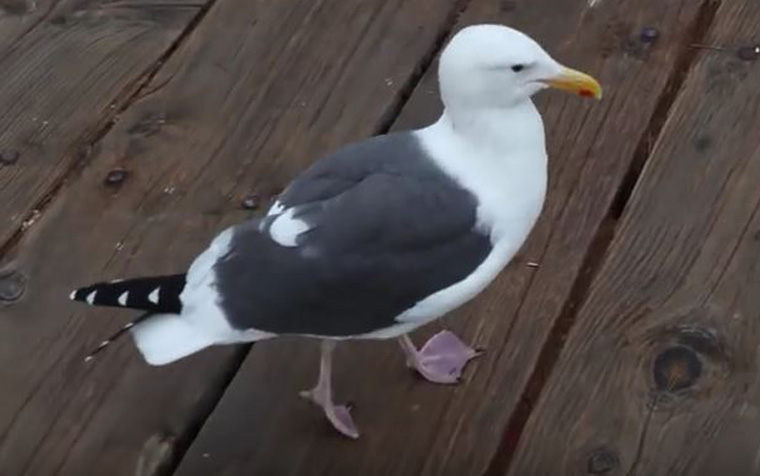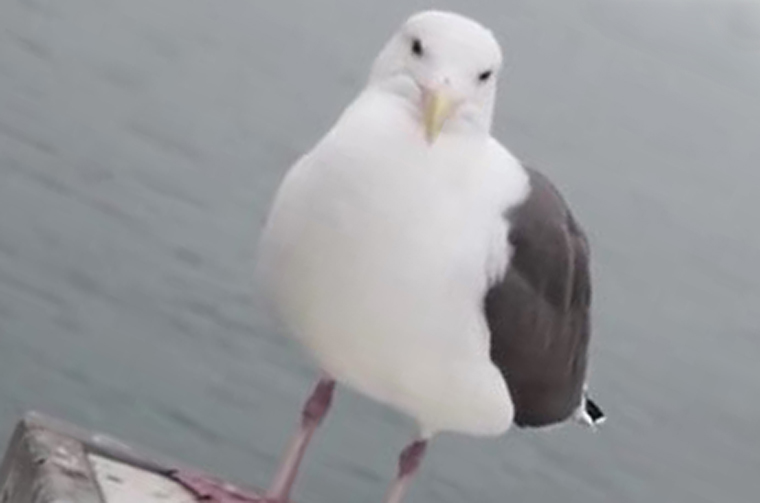-
info@aaanimalcontrol.com
Call us for help in your town
Humane Wildlife Education
Methods to Control Seagulls
Need bird removal in your hometown? We service over 500 USA locations! Click here to hire us in your town and check prices - updated for year 2020.
Sea gulls are often referred to as the rats of the
bird family. This is because they will eat
virtually anything they come across, and they can
also be very destructive in terms of the mess that
they leave behind them. Because sea gulls travel
in large groups together, they can leave a
significantly large amount of waste behind them,
not only in terms of the feces and urine that they
create, but also in the pieces of food that they
don't consume. This can make the area around your
home or business look absolutely disgusting.

Because of this, you want to do all that you can
to try to deter these birds from coming around
your area. While you can do this and many ways,
there are a few that stand out above and beyond
the others. Here are some that you may want to
look into.
Grid Wire Deterrent System - a very popular option
that will take a little time to create but yet
poses no risk to anyone, including the goals, is
the use of the grid wire deterrent system. This is
a series of poles and lines that you used to put
over your property that deters these animals from
being able to fly onto your land. Because they
cannot gain access, they will then look to go
somewhere else which can remove any concerns that
you will have for the future. While this can be a
bit on the pricey side and it takes some time to
set up, you will like the fact that this is a near
permanent solution to keeping seagulls away as
long as you have the grid system in place.
Motion Sensors-Sprinkler System - another means
that you can use to keep seagulls away is by
setting up a series of motion detectors around
your property that are hooked to your sprinkler
system. When seagulls landed on your property, the
motion sensors are activated, which activates your
sprinkler system. This will spray water at these
flying rats, scaring them away so that your land
is safe from these creatures.
The Daddi Long Legs – This is one of the most
peculiar methods that you can use to get sea gulls
to leave your property. How this works is that
this is a system that contains a rotating head
that freely moves around. The head has long steel
wires that are attached to it that bounce any time
that a bird comes in contact with it. Not only
does it act as an irritant toward the birds, but
it will also interfere with their ability to try
to take off or land. What you will find is that
this has been a very successful deterrent because
it can be placed on land, on your roof, or other
structure to keep the sea gulls away.
These may seem like methods that are a little too
technological for some, but they do provide the
right kind of success so that you can keep these
birds away.
Sea Gull Control Methods
Need bird removal in your hometown? We service over 500 USA locations! Click here to hire us in your town and check prices - updated for year 2020.There are a number of reasons why having gulls flying around your property is a bad idea. To start with, they're really big birds. Much bigger than they look when they're flying up in the air, and most people would actually find the large animal quite intimidating once they get up close and personal with it. These birds are well adapted to living alongside humans now, and they have become vicious to the point where they fly and attack, simply stealing whatever food they want, even if it means literally stealing it out of the hands of a human or even out of the mouth of another animal. This is not unheard of behavior from sea gulls.

There is much more to these gulls than just being large, vicious and unsightly birds, however, and just last year it was reported that seagulls could be the cause of the spread of a type of bacteria that was immune to every strain of antibiotic. This even includes the often considered “last-ditch” antibiotic, Colistin. Experts across the globe, especially in China and the USA, have found traces of the bacteria in droppings left behind by the gulls, as well in deceased birds and biological matter. It is more than likely that the birds had picked up the bacteria during their garage and waste rummaging missions. That is where they pick up the bulk of their food because it is easy pickings.
Bird feces isn't considered overly dangerous until there are large amounts of it, and that's what will soon happen if you have a large flock of birds that continually roost or fly over your land. The more birds there are, the more droppings will be left behind. These droppings essentially act as a sponge for disease-causing pathogens. The more feces you have, the higher chance that it will bring disease threats.
The sea gull's droppings are not the only method of disease transmission, however, and this is information you will need to remember when trying to remove the birds from your land. Even feathers can carry disease-causing pathogens, and the bird nests are anther culprit, especially diseases caused by fungi, insects and parasites.
Sea Gull Control Methods
By using the appropriate sea gull control methods, you can dramatically reduce the chances of disease-bearing pathogens and parasites being present in your home or commercial building. You should make a start be removing all access to their nesting points, and this could be easily done using bird net installation and also bird spike strips. These are relatively cheap to purchase and easy to install, but you will need to make sure that there aren't any birds left hanging around first. The last thing you'll want to do is trap any bird, particularly sea gulls, inside your building.
Watch where the birds are visiting the most. This will give you a good idea as to where they are landing or roosting, and you can also track the trail of droppings. These places should be protected either using the spike strips or netting, as we have previously mentioned, stopping any bird from landing there.
At the same time, you should also have a good clean up of your land. Any debris lying around could work as food for passing birds and other wild animals, and where it can't be used for food, it can still be used for nesting or bedding material. Once they have taken the time to build a nest, they're basically there to stay.
All food sources should be removed also, as is the case with other wild animals. Take bird feeders down for a few days, and make sure the kids aren't throwing their sandwich crusts out in the yard 'for the birds'. When you start feeding these creatures, they'll have more of a reason to come back.
You can look at using decoys to try and deter the gulls, but there's a high chance that these won't work. When you're dealing with larger species, such as gulls, hawks and eagles, you'll probably find that dummy or plastic bird replicas just don't work. Once the sea gulls realize that the dummy doesn't move or try to attack them, they'll just keep coming back.
If you continually have a sea gull problem, we would suggest giving local wildlife removal experts a call. Many of them will be more than happy to give you some free advice over the phone, and if you give us a call, we can usually book you a same-day appointment to get that gull issue resolved.
For more information, you may want to click on one of these guides that I wrote:
How much does bird removal cost? - get the lowdown on prices.
How to get rid of birds - my main bird removal info guide.
Example bird removal photographs - get do-it-yourself ideas.
Bird job blog - learn from great examples of bird jobs I've done.


















